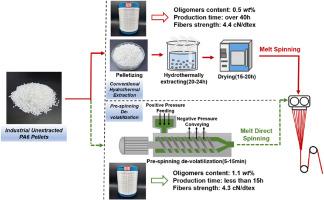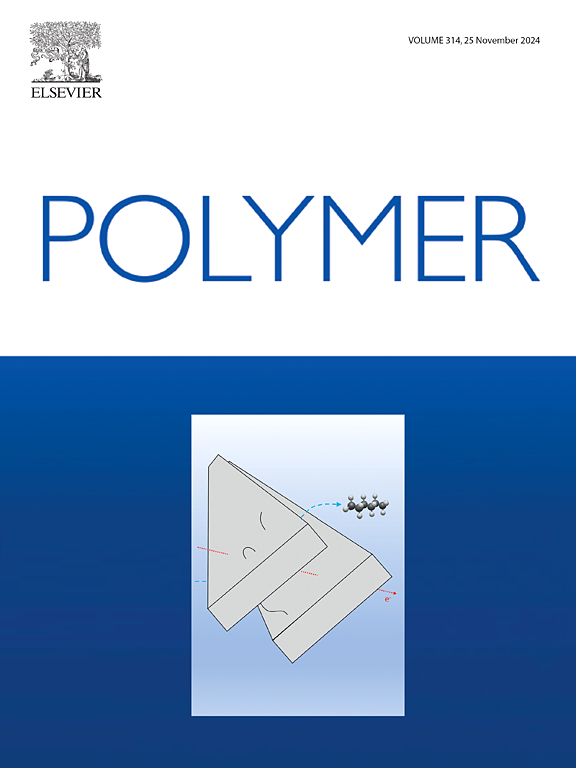Highly efficient de-volatilization of PA6 melt before spinning, enabling oligomer content control and direct melt spinning
IF 4.1
2区 化学
Q2 POLYMER SCIENCE
引用次数: 0
Abstract
Efficient short process preparation of PA6 fibers has received much attention. Almost all research related to PA6 melt direct spinning requires modifications to industrialized equipment that would otherwise not be suitable for the industrial production of PA6 direct spinning. In this paper, the reduction of oligomer content was achieved during melt transportation before spinning. Liquid-phase de-volatilization of PA6 melt was carried out using a twin-screw extruder with a depressurization device, and the oligomer removal efficiency was improved by a combination of pressurized feeding and depressurized conveying. The results indicated that after de-volatilization, PA6 oligomer is reduced to 0.9–1.2 wt%, and the cyclic dimer content decreased to 0.18–0.21 wt%, which are 90 % and 75 % lower than that before de-volatilization, respectively. After de-volatilization, PA6 melt can be directly high speed (4000 m/min) spinning. The spinning process is stable, achieving a fiber strength of 4.0–4.4 cN/dtex and a dyeing rate exceeding 96 %. This performance is comparable to the PA6 fiber treated with industrial hydrothermal extraction. The oligomer control process (pre-spinning de-volatilization) in this paper can be directly connected to existing industrial PA6 polymerization and spinning units to achieve a continuous PA6 polymerization-melt transport-spinning process. The process reduces oligomer removal time from 20 to 24 h to less than 15 min when compared to existing hydrothermal extraction. The process is thoroughly compared with current oligomer control technologies and offers a cost-effective solution for the direct melt spinning of PA6 fibers.


求助全文
约1分钟内获得全文
求助全文
来源期刊

Polymer
化学-高分子科学
CiteScore
7.90
自引率
8.70%
发文量
959
审稿时长
32 days
期刊介绍:
Polymer is an interdisciplinary journal dedicated to publishing innovative and significant advances in Polymer Physics, Chemistry and Technology. We welcome submissions on polymer hybrids, nanocomposites, characterisation and self-assembly. Polymer also publishes work on the technological application of polymers in energy and optoelectronics.
The main scope is covered but not limited to the following core areas:
Polymer Materials
Nanocomposites and hybrid nanomaterials
Polymer blends, films, fibres, networks and porous materials
Physical Characterization
Characterisation, modelling and simulation* of molecular and materials properties in bulk, solution, and thin films
Polymer Engineering
Advanced multiscale processing methods
Polymer Synthesis, Modification and Self-assembly
Including designer polymer architectures, mechanisms and kinetics, and supramolecular polymerization
Technological Applications
Polymers for energy generation and storage
Polymer membranes for separation technology
Polymers for opto- and microelectronics.
 求助内容:
求助内容: 应助结果提醒方式:
应助结果提醒方式:


